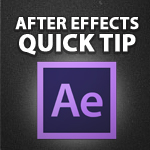
Video Tutorial: Using Masks in After Effects
In this After Effects Quick Tip we explore how to create a mask over your video footage. We’ll dig into Mask preferences, shortcuts and using masks to create a quick vignette in AE.

The mask tool in Adobe After Effects is essential for isolating one area of your video footage. Masks can be used for a wide range of video effects in AE, including adding a filter or effect to only one region of the frame or to remove parts of the video image altogether.
In this After Effects Quick Tip you’ll learn the basis of adding and modifying masks in your AE project. Highlights of the video tutorial include:
• Adding a mask in After Effects
• Feathering mask edges
• Adding multiple points on your mask
• Using shortcuts for creating and working with masks
• Adding beziers to your mask
• Using masks to create a quick vignette
FULL VIDEO TRANSCRIPT:
[color-box color=”gray”]Hey everybody. Welcome to this quick start guide to working with masks in After Effects.
I’ve got a layer in my composition and basically compositions are similar to sequences in Premiere Pro so I’ve got this clip and I’d like to apply a mask to it. I’ll go back to the selection tool so you can see this. You want to click over here on the rectangle tool. This will basically give you a mask. I can click, hold, and pick other ones here. I’ve got other choices. Rectangle, rounded rectangle, and I can also click q and this will cycle me through the mask.
To apply it, if you click, once you click you’re only going to see what’s inside of the mask. Here I’ve got a mask. If I want to do multiple mask I can if I click again. You see the issue with this is the masks are the same color. To avoid this I’m going to make a preference change. I’m going to go remove these.
I’m going to go to After Effects preferences appearance and I’m going to check cycle mask colors. This way every time I create a mask it’s a new color. So we’ll go back, create a mask. You’ll now see when we do this they’re colors, they’re different colors. You can always come down here and change it later, but this is just handier. It’s quick, it’s going to save you some time.
I’m going to go back to just one mask and talk about how to work with masks. If I hit m, that’ll roll everything up. If I hit M once it’ll show me the mask on this layer. MM will show me all the options. The path mask, I can animate the shape. Mask feather, I can soften up the mask. I’ll do that. Mask opacity is, by default it’s 100%, but you can change that and key frame it. Mask expansion are you basically shrinking or expanding the mask. A lot of times I’ll set this first and then come in and use the mask feather. I’m just going to reset that.
Working with mask, I going to grab the regular selection tool and click off. If you click on the layer name and click on a point, you’re actually changing that point. I’m going to do that. If you click on the name of the mask and not the layer it’ll actually move the mask around. If you double click on a corner that’ll give you free transform and this is just like free transform is in Photoshop. You’ll see that I can rotate it here. I can change the widths, the heights. I can move it around.
This is the easiest way to do that. Then you hit return to get out of it, if you just double click that’ll give you that.
We can add points to it. If we grab the pen tool it’s smart, so it now knows that there are points here. So it gives us the plus so we could come in and basically add points. If I come back I could now delete a point by selecting that. You can also come up here and do convert vertex tool and this will give you Beziers with handles. If you click again it will toggle back. Then the newest one, this is new in CS6, is the mask feather tool, if I come in here and click and drag this basically will feather all sides. But then I can come in here and just click on these corners and it will just affect one side.
I’m going to undo that. What I tend to do with this tool is if you put it over the edge here instead of dragging it out like that hold shift and that way you can basically do one side at a time. Let me get rid of this point here. I’m going to hold shift, click right here and drag out. That just does that side. I do that a lot if I’m doing lower thirds or something where I just want to work with one side. I’m going to delete that. I’m going to show you a practical use of mask to do a vignette. Let’s say I want to put a vignette on this. I’m going to deselect my layer, I’m going to right click down here and say new, solid and I’m going to call it “Vignette.” I want it to be comp size, just click that to make sure. I’m going to make it black. Then this gives you a black layer that covers everything, black solid.
I’m going to go back to my masking choices and pick ellipse tool. The neat thing with this is I don’t need to click and drag out. I don’t have to come up here and try to figure out what would be a good size. All I have to do is double click on it and that makes it fit. I need to swap it. So you can either click inverted or you can go to where it says “add” and do subtract and that’ll flip it. Then you can roll down mask one here and see the properties. Again, you can hit M to roll it back up. Click m again it completely rolls up, hit mm, this’ll show you all the choices. I tend to do this. I would use mask expansion to figure out how large I wanted it and
then I would do mask feather. That gives me a vignette.
I can toggle this on and off, this is toggle mask and shape path visibility. So I can hide it when I’m working with it if I want. If you decide that you want a different color vignette if you’re doing something stylized like a wedding you can go back up to layer solid settings and you can click in here and pick something else. This is live, so you can see what it’s doing. If you wanted to you can take the eyedropper, maybe click on a color in the scene and use that. Black’s the most standard look, but you can also use it for different treatments like this. So that’s a quick start with working with mask. Hope you guys found that helpful.
Got your own tips and tricks for working in After Effects?
Share them in the comments below![/color-box]





